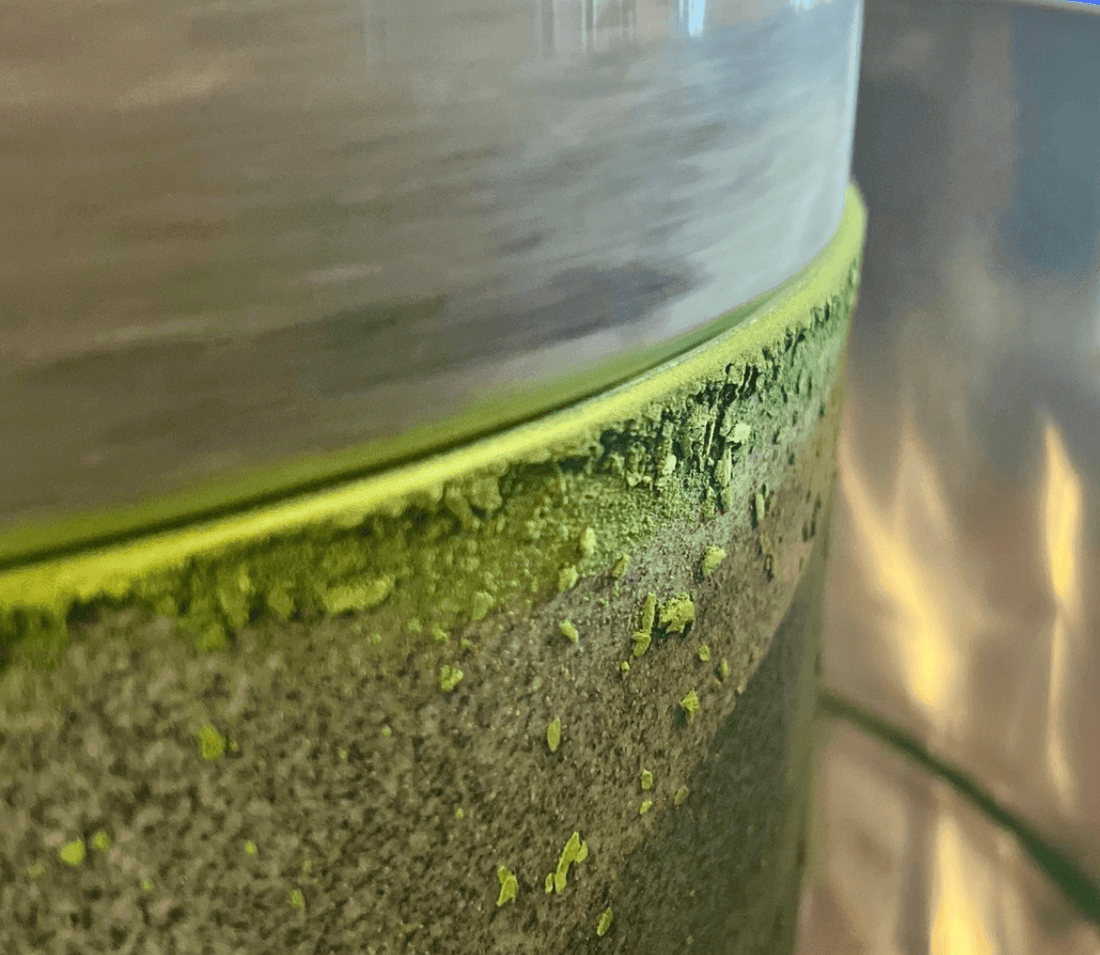The flavor of an authentic cup of matcha simply cannot be beat. There are several factors that may affect, enhance, and even preserve the taste of matcha, but having high quality matcha in the first place is critical. Read on to learn about the different stages of matcha production that affect the flavor and where you can find the most potent, high-quality matcha online.
Understanding the Process of Matcha Production:
Growing
The matcha making process is complex, and definitely more complicated than producing your average type of tea. First of all, matcha is made from a special type of Japanese green tea, called Tencha, that spends weeks under shade before it is harvested and eventually ground into its powder form. Tender young growth of the tea bushes are shaded very shortly after bud-break, forcing them to grow wide and flat, in an effort to catch more light. That results in the production of more chlorophyll, hence the vibrant green color that is so common to matcha. Finally, shading prevents the conversion of savory amino acids into more bitter catechins, preserving the umami flavors of the tencha to their fullest extent.
After Picking
Processing premium matcha requires great skill. Since shading causes the leaves to grow very thin and wide, they are even more delicate than regular tea leaves. What’s more, the leaves of tencha need to be left unshaped and unrolled. The rolling of tea leaves, as happens with gyokuro and sencha, breaks cell walls within the leaf that causes flavorful molecules to be more readily extracted by hot water. On the other hand, Tencha brewed as loose leaf is incredibly light in body and flavor - a far cry from what it becomes once milled.
After being picked, the leaves are steamed immediately to prevent them from oxidizing. This occurs for all non-black teas, in a process known as “kill green,” as heat halts the enzymatic reactions of tea leaves to oxygen. From here, the leaves go into a chamber where they are blown around to loosen them up – what does that mean?. The next step involves putting the leaves into a heated furnace, which reduces moisture to around 5% and forms aracha, also known as unrefined or crude tea. Finally, the leaves are stored for months before they are ground into their final version. Traditionally, this storage would take place underground, and around 6 months later, in November, the unearthing would be celebrated in an event called Kuchikiri. These days, refrigeration does most of the storing, but some still celebrate Kuchikiri in order to preserve the tradition.
Milling the Matcha
It is the milling of matcha that truly releases its flavor. As I said, when brewed as loose leaf, tencha doesn’t really taste like much. But once it’s milled, matcha becomes one of the most distinctive flavors in the tea world. The final step for preparing the aracha is picking out the stems and veins, so that only the more brittle and thin leaf matter goes into the mill. Then, a set of hand-carved granite stones slowly grind tencha into matcha through an intricate series of grooves. The process takes patience; the mill needs to turn slowly so as to avoid overheating the fine particles. Slow milling also ensures a smaller final particle size, as it increases the duration for which each particle is in the mill. The final matcha slowly tumbles through the hairline space between the two stones at a rate of about 40 grams of matcha powder per hour.
Ceremonial Grade matcha is ultimately an ultra-fine powder, ideally 10 microns in size, if not smaller. Once it’s milled, the cell walls are finally broken, and the surface area exposed to oxygen is exponentially greater than that of whole leaf tencha. This means that the delicate flavors can fade relatively fast, in a matter of a month or two. So while the entire process up to this point has required lots of patience to produce high quality matcha, the next step - consumption - may benefit from, if not impatience, then at least some eagerness! Do you want to discuss the length of shipping from Japan vs. overnight shipping from us? And nitrogen flushing, why it is used and why it is less than perfect?
If you are interested in trying an authentic cup of high quality matcha for yourself, River and Stone Tea is the place to look! We operate one of just a handful of authentic matcha mills in the country, and mill fresh, ceremonial grade matcha to order. This makes our matcha incredibly smooth and creamy, free of the bitterness and astringency of lower quality or older matcha. Beyond that, there is a certain indescribable quality and fragrance to matcha just off the mill that simply needs to be experienced to be understood! Order premium matcha powder online from River and Stone Tea today!

